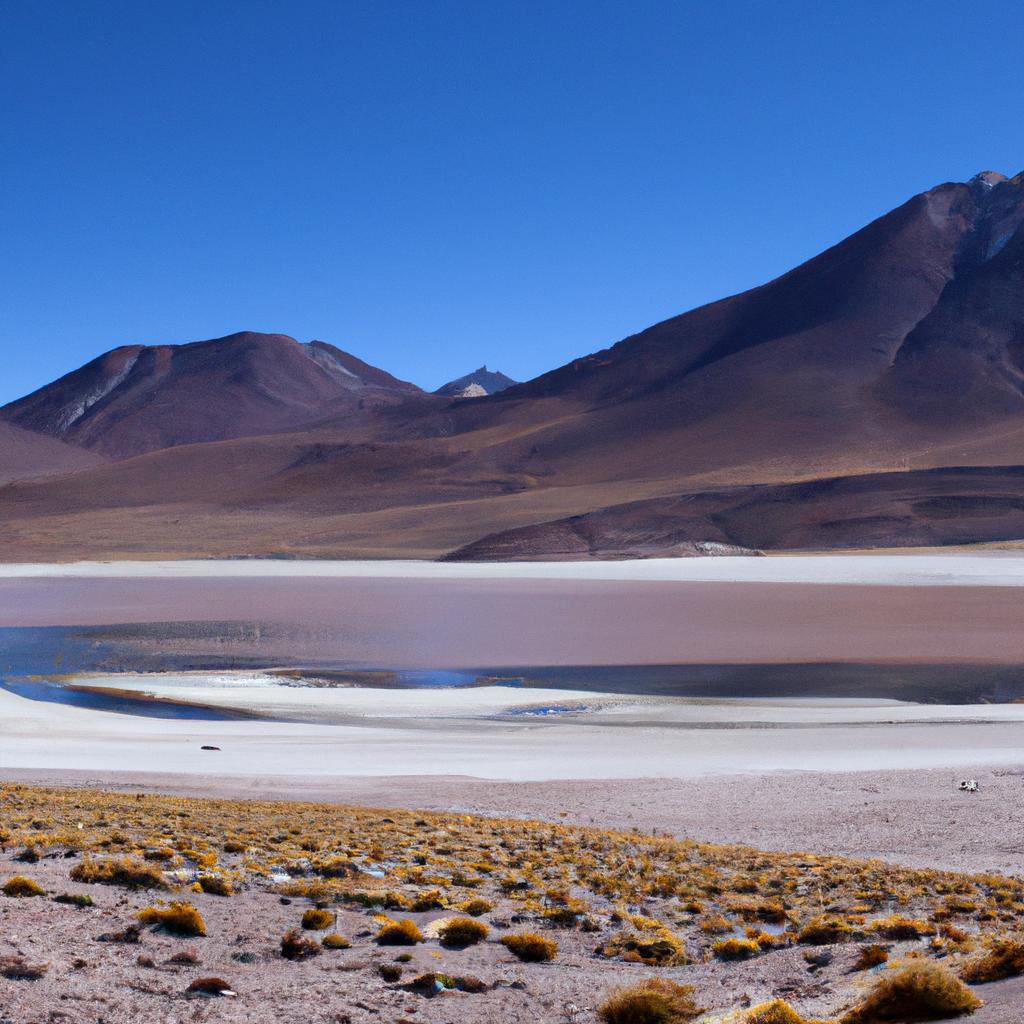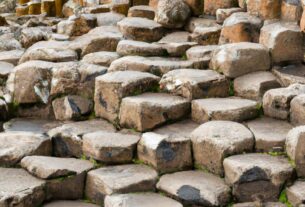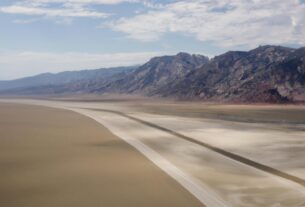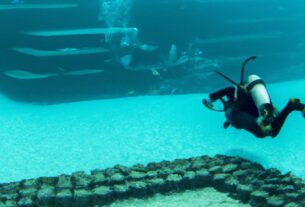Laguna Roja, known as the Red Lagoon, is an extraordinary natural marvel nestled in the Eduardo Avaroa Andean Fauna National Reserve in Bolivia. This shallow salt lake is renowned for its mesmerizing reddish hue, which owes its beauty to the pigmentation of algae and plankton that thrive in its waters. The lake is encircled by majestic mountains, including the iconic Licancabur volcano, augmenting the surreal ambiance of the area.
Despite its remote location, Laguna Roja has become a sought-after tourist destination for both nature enthusiasts and adventure seekers alike. Its enchanting allure and distinctive qualities captivate visitors, making it an essential stop for anyone exploring South America.
The history of Laguna Roja dates back to ancient times when it was considered sacred by the indigenous people of the region. European explorers officially discovered the lake in the 19th century and were captivated by its charm and unique characteristics. Since then, Laguna Roja has become a symbol of Bolivia’s natural wonders, attracting tourists from around the globe.
Location and Access
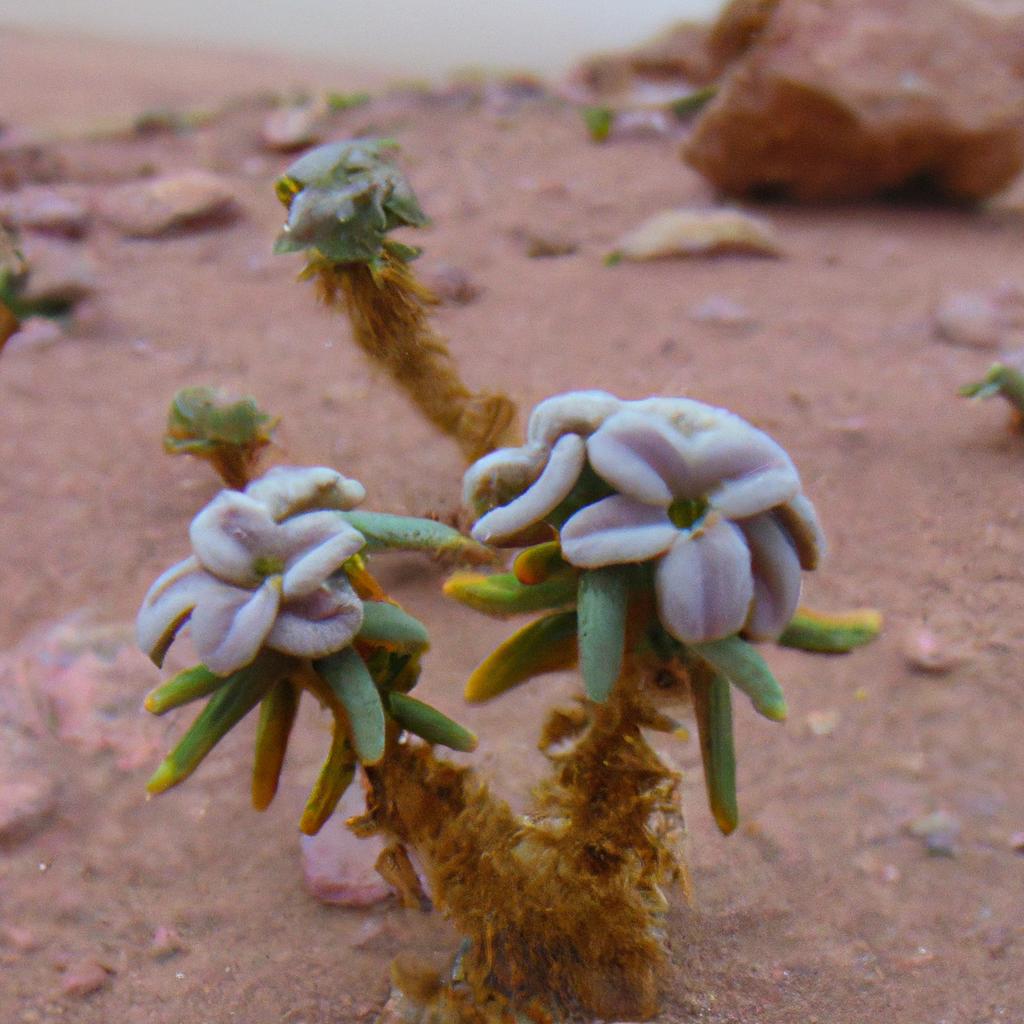
Geography and Landscape of Laguna Roja
Laguna Roja is situated in the southwestern part of Bolivia, near the Chilean border. It is nestled within the Eduardo Avaroa Andean Fauna National Reserve, a sprawling 7,000 square kilometers expanse renowned for its diverse array of flora and fauna. The lake itself sits at an altitude of 4,300 meters above sea level and covers an area of approximately 20 square kilometers.
The landscape surrounding Laguna Roja is characterized by rugged mountains, vast deserts, and geothermal fields. The towering presence of the Licancabur volcano, overlooking the lake, enhances the surreal ambiance of the region.
Directions and Transportation Options
Reaching Laguna Roja is no easy feat, given its remote location in Bolivia. Uyuni, a major city approximately 200 kilometers away, serves as the closest hub and can be reached via road. From Uyuni, visitors have the option to book a tour or rent a car to embark on the journey to the lake.
Another alternative is to fly into El Alto International Airport in La Paz, Bolivia’s largest airport. From there, visitors can take a domestic flight to Uyuni or hire a private car for direct access to the lake.
Recommended Time to Visit Laguna Roja
The dry season, running from May to October, offers the best conditions for visiting Laguna Roja. During this period, the weather is relatively stable, and clear skies provide breathtaking views of the lake and its surrounding mountains. However, visitors should be prepared for cold temperatures and bring appropriate gear for high-altitude conditions.
It is essential to note that weather patterns in the region are variable, and sudden changes can occur. Additionally, the rainy season, from November to April, may render the lake inaccessible due to flooding and other weather-related concerns.
Flora and Fauna
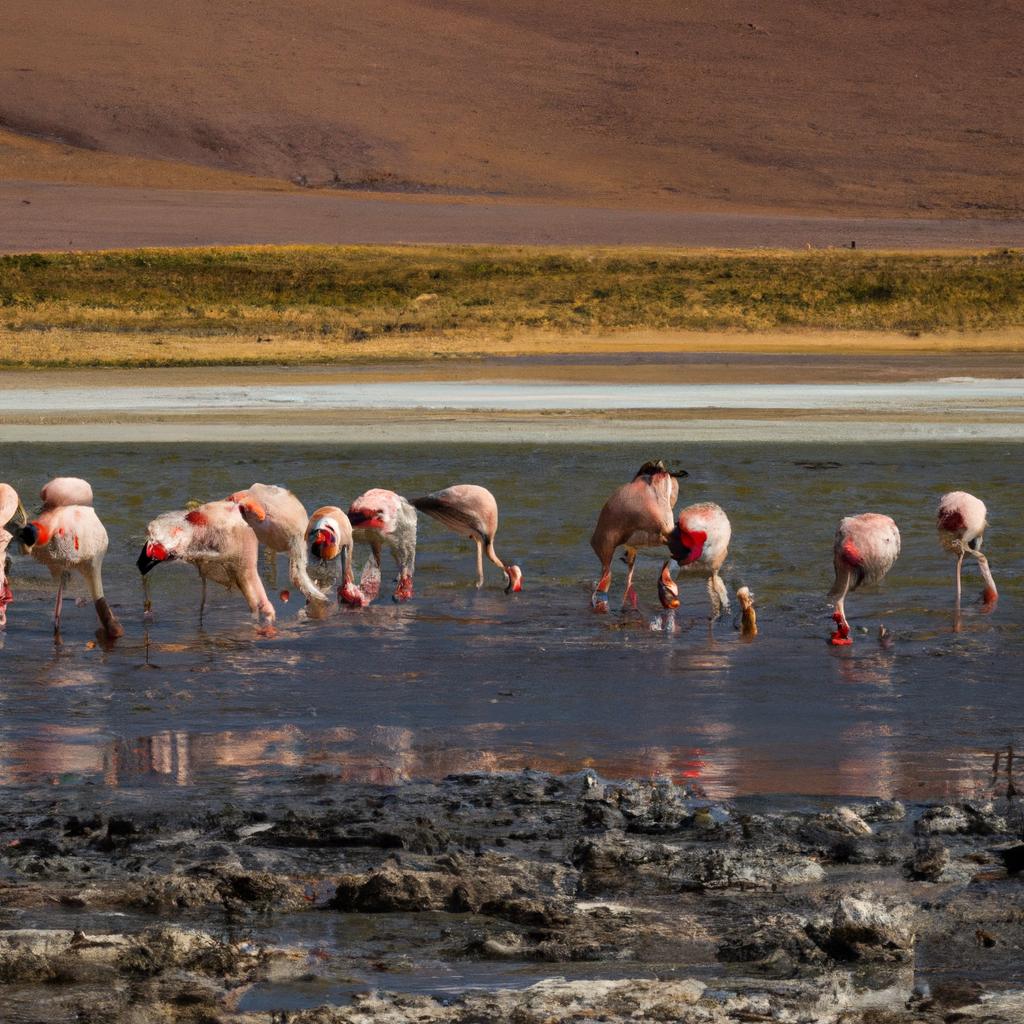
Laguna Roja boasts a unique ecosystem that supports a diverse range of plant and animal species. The challenging conditions, including extreme temperatures and high altitude, have led to the evolution of specialized organisms adapted to this environment. In this section, we delve into the flora and fauna of Laguna Roja, including endemic species found nowhere else on Earth.
Plant Species
Despite the harsh conditions, Laguna Roja hosts a variety of plant species adapted to the salt-rich soil and extreme temperatures. Cushion plants, characterized by their low-lying and compact growth habit, are the most prevalent in the area. These plants survive by storing water and nutrients in their thick, fleshy leaves, enabling them to endure drought and extreme temperatures.
Thorny shrubs and grasses, adapted to the arid conditions of the high-altitude landscape, also thrive in the region. They play a crucial role in stabilizing the soil and preventing erosion.
Animal Species
The diverse landscape of Laguna Roja supports an array of animal species, including mammals, birds, and reptiles. Vicuñas, small wild South American camelids, are the most commonly sighted animals. They are well-adapted to the high-altitude environment and graze on the grasses and shrubs of the area.
Other notable species include the Andean fox, a small carnivorous mammal, and the Andean flamingo, renowned for its striking pink plumage. The Andean flamingo is an endemic species of the area and a major attraction for visitors to Laguna Roja.
Endemic Species
Laguna Roja harbors several endemic species, organisms found exclusively in this corner of the world. These unique species have evolved in isolation, adapting to the area’s distinctive conditions. James’s Flamingo, a subspecies of the Andean flamingo, is one of the most renowned endemic species, known for its vibrant pink coloration. Other endemic species found in Laguna Roja include the Andean goose, the Andean hillstar, and the Andean flicker.
Activities and Attractions
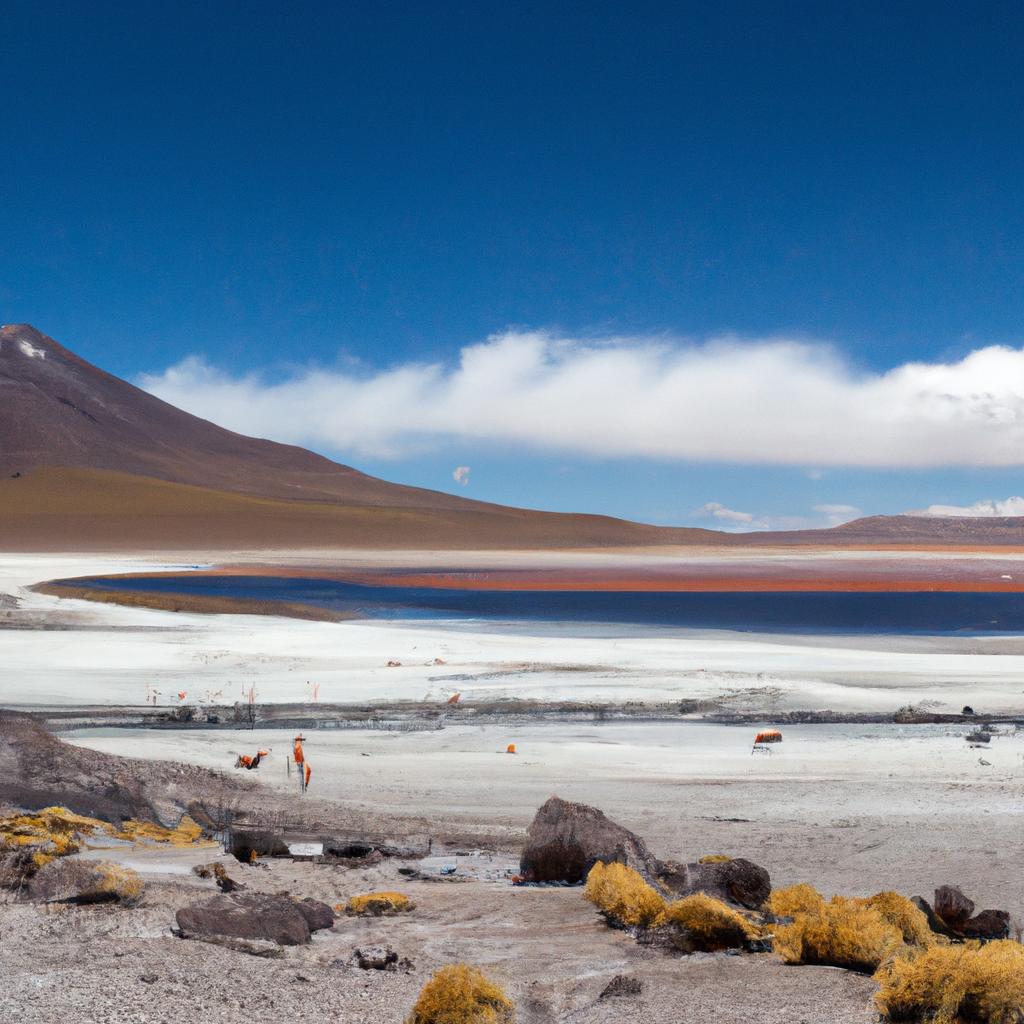
Recommended activities in Laguna Roja
There are numerous ways to savor the beauty of Laguna Roja, catering to various interests and adventure levels. Hiking is a favorite activity, with several trails offering breathtaking views of the surrounding mountains. Exploring the area by bicycle or ATV is another exciting way to experience the lake’s natural splendor.
For those seeking water activities, kayaking and stand-up paddleboarding are excellent options, given the lake’s tranquil waters. Visitors can also indulge in a refreshing swim, though it is important to note that the water’s high salinity may irritate the skin.
Best spots for photography
Laguna Roja is a paradise for photographers, with its stunning landscapes and unique features providing fantastic photo opportunities. One of the prime spots is on the eastern side of the lake, where the rising sun bathes the surrounding mountains, creating a dramatic and picturesque setting. Another captivating location is near the southern edge, where the vivid red water contrasts against the blue sky, resulting in a visually striking effect.
Notable landmarks and attractions
In addition to the lake itself, Laguna Roja boasts several remarkable landmarks and attractions. The magnificent Licancabur volcano, dominating the lake’s vista, serves as a stunning backdrop for photographs. Exploring the nearby geysers and hot springs further enhances the surreal ambiance of the area.
The Stone Tree, a natural rock formation resembling a tree, is another must-see attraction. Located near the southern edge of the lake, it offers a unique vantage point for capturing the lake and surrounding mountains from atop the formation.
Conservation and Preservation
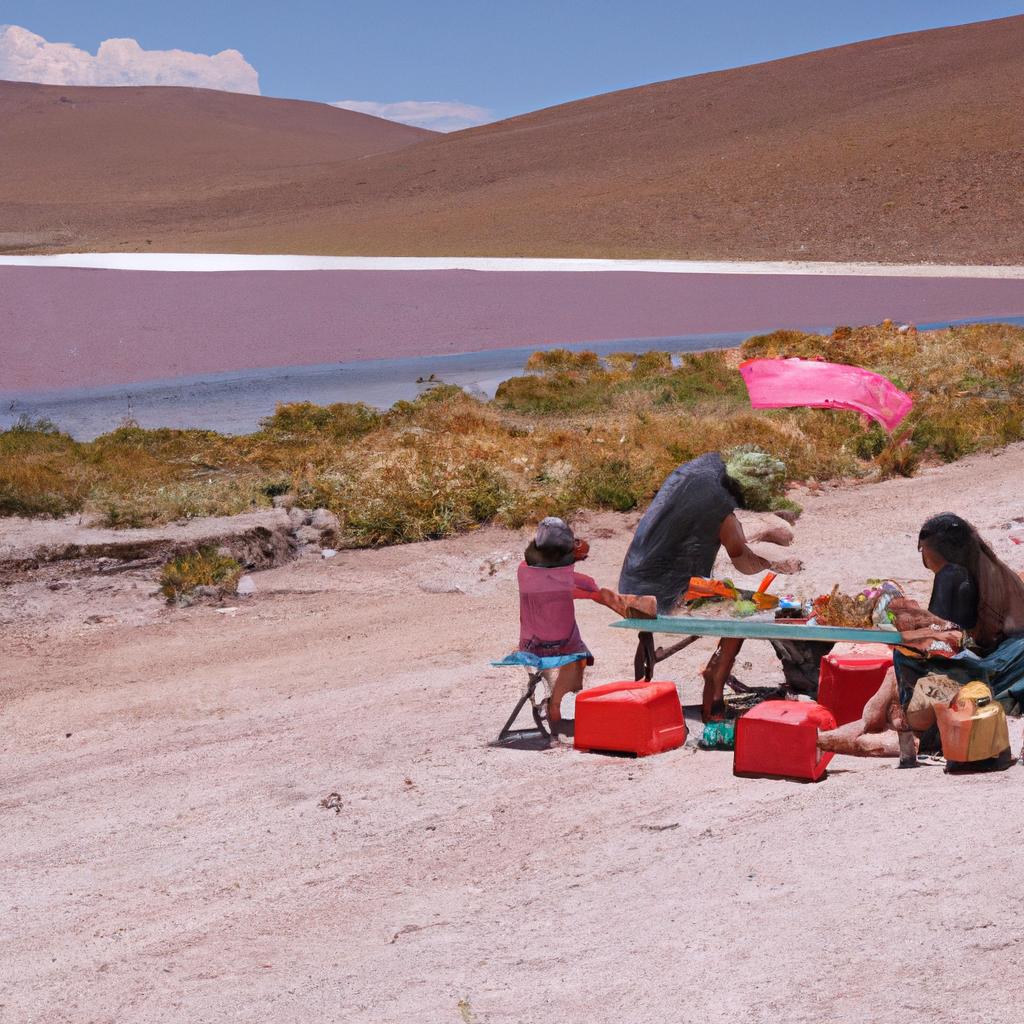
Laguna Roja is not only a stunning tourist destination but also a precious ecosystem that warrants preservation for future generations to appreciate. The Bolivian government, in collaboration with various conservation organizations, has implemented measures to protect the lake’s delicate environment. In this section, we explore the ongoing efforts to preserve the natural integrity of Laguna Roja.
Efforts to Preserve the Natural Environment of Laguna Roja
The Eduardo Avaroa Andean Fauna National Reserve, encompassing Laguna Roja, was established in 1973 to safeguard the unique flora and fauna of the region. Spanning an area of 7,147 square kilometers, the reserve is home to several endangered species, including vicuñas, flamingos, and Andean foxes. Additionally, the reserve encompasses other lagoons and hot springs vital to the local ecosystem.
To further safeguard the lake’s delicate ecosystem, the Bolivian government has implemented regulations to limit human impact. This includes controlled access to specific areas around the lake and visitor quotas within the reserve.
Importance of Sustainable Tourism
Sustainable tourism plays a pivotal role in preserving Laguna Roja’s natural environment. The government and conservation organizations promote environmentally friendly tourism practices that respect the fragility of the area’s ecosystem. This encompasses initiatives such as waste reduction, the use of biodegradable products, and avoiding disturbance of wildlife.
Visitors are encouraged to adhere to the guidelines established by the national reserve, minimizing their impact on the environment. This includes sticking to designated trails, avoiding littering, and refraining from touching or disturbing wildlife.
How Visitors Can Contribute to Conservation Efforts
Visitors can actively contribute to conservation efforts at Laguna Roja. By practicing responsible tourism and supporting sustainable practices, visitors can help minimize their impact on the environment and preserve the lake’s fragile ecosystem. Additionally, visitors can contribute to local conservation organizations through donations or participation in volunteer programs.
In conclusion, Laguna Roja represents an unmissable destination for anyone traveling to South America. Its distinct reddish hues, breathtaking landscapes, and rich biodiversity make it a natural marvel capable of leaving a lasting impression on visitors.
Whether you are an avid hiker, wildlife enthusiast, or simply seeking an escape from the daily grind, Laguna Roja caters to all. From hiking the summit of Licancabur volcano to exploring the surrounding Andean fauna reserve, endless opportunities await to immerse yourself in the area’s natural beauty.
While reveling in the wonders of Laguna Roja, it is vital to remember that this fragile ecosystem demands our respect and preservation. By adopting responsible tourism practices and supporting conservation efforts, we can safeguard Laguna Roja’s natural splendor for years to come.
So, what are you waiting for? Plan your journey to Laguna Roja today and embark on a discovery of this remarkable destination. And remember, for more inspiration and information about nature, gardening, and animals, visit TooLacks, your go-to source for all things natural.
